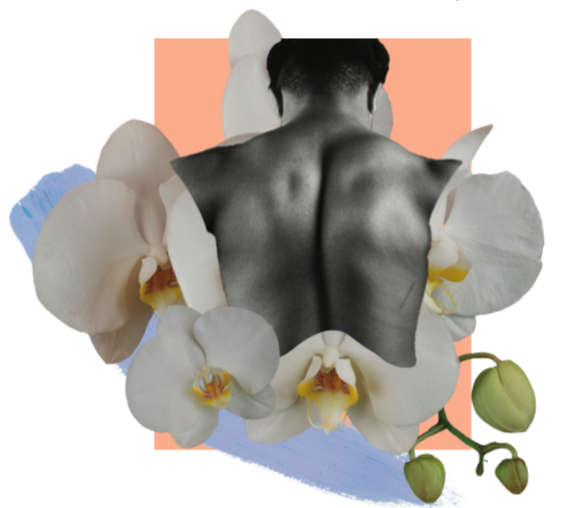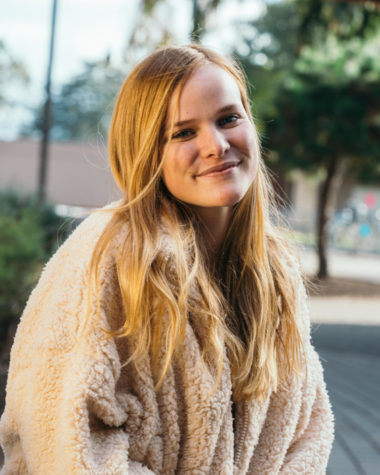UNCENSORED

Photos by Ryan Gwyn and Grace Rowell
Can the human body be art?
From the mathematical precision and beauty of ancient Greek sculpture to the contemporary and controversial reclining nude paintings of 19th century Europe, the human body has been a pivotal element in artistic expression for centuries. In primordial art, the human form maintained relevance because of its established status of perfection. The human body, which had previously been portrayed as flawless through art, has since been transformed into a vessel that serves as a commonality that links the human race together, regardless of background, culture or ethnicity. This sense of familiarity provides artists with the ability to utilize the human form to demonstrate concepts that are universal and pertain to everyone. However, there are inherent controversies that have begun to surround the display of nudity within art and society, and consequently, movements have emerged in an attempt to erase the taboo that surrounds the naked form.
THE HISTORY
An examination of art history reveals that the most common portrayal of the human form is derived from ancient Greco-Roman art and sculpture. In ancient Greece, the presentation of the human body was commonplace, as it was paralleled with exemplary divine figures.
Philosophers and artists alike studied the human form in an attempt to emulate this natural perfection via marble and bronze sculptures. Ms.La Fetra, Paly AP Art History teacher, comments on the use of nude forms and their significance within ancient art. “Nudes were used extensively in ancient Greek and Roman art,” La Fetra said. “The athletic human body was considered an expression of perfection, and reflected [the Greco-Roman] belief in Humanism, where the perfection of the body took on spiritual significance. The ancients were obsessed with the beauty of math, and saw perfect proportions of the human body as a manifestation of perfect beauty.”
The ardent value of the human body held by ancient society allowed for a civilization in which one could freely admire and recognize the worth of a depiction of a naked form. Natural body parts, such as breasts, were appreciated for their pure aesthetic appeal when portrayed in a sculptural or painted form, rather than being branded as ‘pornographic’ or ‘explicit.’
“Throughout art history, we have the presence of the ‘male gaze,’” La Fetra said. “That is, the female body is portrayed with an awareness of a man looking at her. She appears coy, or trying to cover herself.” Due to the ‘male gaze,’ female nudes in art were generally created not for the aesthetic appreciation of everyone, but purely for the eyes of men.
Contrary to the early depictions of female nude forms in art, nude male forms sustained the Humanistic perspective prevalent within Greco-Roman art. “Interestingly, male nudes generally don’t [recognize the male gaze], which is a result of most art being created from the male heterosexual point of view,” La Fetra said.
There was generally little skepticism concerning the artistic value of the expressive nude sculptures that visually demonstrated man’s inner and outwards struggles during the Ancient Greece Era. Polykleitos, a famous sculptor from Ancient Greece, worked with great precision to create Doryphoros, which is a nude representation of a male athlete. The chiseled sculptural features within Doryphoros demonstrated admired qualities associated with divine figures and deities, as well as a portrayal of purity that the Greek gods possessed.
As artistic styles developed within ancient civilizations, the nude form depicted in art began to garner a negative perception. “Negativity toward the nude began because the nude no longer was idealized, as in ancient Greek art, but was portrayed as a real person,” La Fetra said. “Instead of looking at beauty personified, the public was looking at a common [person] and [were] confronted with their humanity.” This negative perception has now transformed into the sexual themes that are associated with nude artistic depictions today.

THE MOVEMENTS
As as the modern age progresses, art and the boundaries of what it can be called expand and contract. Due to the present over-sexualization of naked bodies, especially of the female body in the media, the majority of people are more likely to perceive nudity as pornographic or explicit rather than artistic. However, if those associations can be separated so that the art is detached from sexual connotations, then the human body could be used as a direct mode of expression in art as it was originally intended.
In an attempt to revive the artful use of the human form, contemporary artists not only use nudity for the purpose of aesthetic gratification but also use it to shock, question and challenge the norms of society. Photographers such as Robert Mapplethorpe utilize the formal techniques of photography to completely contradict the portrayal of women and men throughout classical art.
Mapplethorpe, an American photographer known for his exploration of controversial subject-matter, posed and photographed female bodybuilders in feminine clothing to contrast previous artistic representations of women as demure, displaying them as a balance of strength and femininity. Artists such as Mapplethorpe use nudity to portray women and men in opposition to societal expectations.
Similar to Mapplethorpe, Paly alumni Emma Toma is a photographer whose work is also centered around the human form. Toma’s photographs depict the exposed upper body of men and women, and by manipulating their expressions and scenes around them, she presents her models in unconventional ways. When addressing the way she photographs women, Toma writes to her social media followers, “My goal is to push your stereotypical ideals of how a woman should act and present herself.” Similar to La Fetra’s observation of the male-gaze throughout art history, Toma addresses the tendency for nude women to be portrayed as if a man is looking at her. “The point that many people fail to see is that usually, when a nude photo is taken, it is for somebody else’s pleasure and typically tends to be soft and subdued in order to satisfy the viewer,” Toma said. In attempt to trump this habit of portraying women in this way, Toma says she photographs women “for no other pleasure then [the woman’s] own.”
Since the human body is perceived as the most vulnerable part of one’s individuality, artists can manipulate representations of the body and ultimately change how one’s identity is perceived in the eyes of others and to oneself. Although artistic styles have evolved, the nude form as has maintained its status as an influential element in art, as it is applicable to all viewers. Ultimately, an artist’s ability to utilize forms of expression, like nudity, gives them a tool to confront controversial subject-matter and transform the way that women and men are regarded in society.









